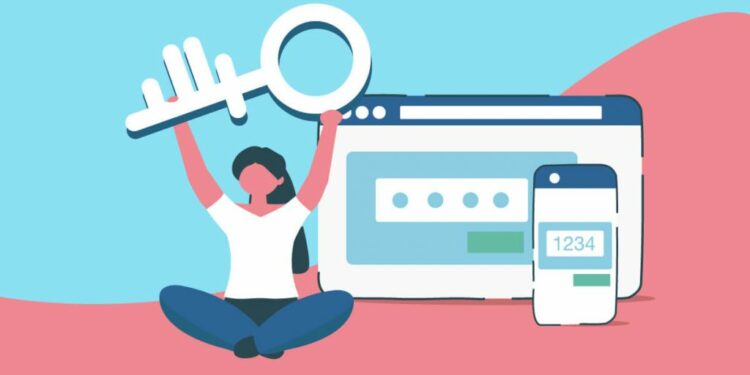In the digital age, people’s private information has become more valuable than ever. We now unknowingly give many people or companies access to our information, and although most of the time this is for a legitimate purpose, other malicious actors can take advantage of this. It is important to protect your personal information online because it can be used for malicious purposes such as identity theft or fraud. If you want to know more about cybersecurity and the best practices for staying safe while surfing the web, make sure to visit the Guardio blog for reliable and up-to-date information. In this blog post, we will tell you how to secure your personal information online.
How to Use Advanced Online Security Measures to Safeguard Your Data
- Use strong passwords: Make sure to use strong, unique passwords on any accounts that store your personal information. Avoid using the same password for multiple sites as it can make it easier for someone to gain access to all of your accounts if one is compromised.
- Enable two-factor authentication: Two-factor authentication adds an extra layer of security to your account by requiring you to enter a code sent via text message or email when logging in from a new device.
- Monitor your accounts regularly: Regularly review the activity on any online accounts that contain personal information such as credit card and bank statements, social media profiles and email inboxes. This will help identify any suspicious activity quickly and take action if needed.
- Use a virtual private network (VPN): A VPN encrypts your internet connection, making it much harder for hackers to intercept and steal your data.
- Use secure websites: When entering personal information online, make sure the website is using a secure connection (https://). This will ensure that any data sent between you and the website is encrypted and safe from prying eyes. It also helps protect against malicious software such as viruses and malware.
- Keep software updated: It’s important to keep all of your software up-to-date with the latest security patches as these can help protect against cyberattacks.
- Be aware of phishing scams: Phishing scams use fake emails or messages to try and trick you into providing personal information. Be wary of any emails or messages that ask for your passwords, credit card details or other sensitive information.
Best Practices for Setting Up and Maintaining a Secure Password
- To create a strong and secure password, it is important to use a combination of upper and lower-case letters, numbers and symbols. This will ensure that your password is harder to guess or cracked by hackers attempting to access your data. It is also recommended to regularly update your password every few months.
- When setting up or choosing your passwords, it is advisable to refrain from using common words or phrases, as these can be easily guessed by malicious hackers and increase the chances of a security breach. Instead, opt for strong passwords that are unique, incorporate a mix of letters, numbers and special characters and are not related to any identifiable information.
- It is important to regularly change your passwords in order to maximize the security of your accounts. This helps ensure that even if a malicious individual were able to gain access, they would not be able to stay for an extended period of time. Additionally, regularly changing passwords also reduces the risk of automated programs being able to crack or guess them.
- It is highly recommended that you never share your passwords with anyone else, as doing so could potentially give them unrestricted access to all of your accounts. Even if someone close to you requests it, it is important to maintain the confidentiality of your password in order to protect yourself and your data from potential breaches or misuse.
- To ensure the safety and security of your passwords, it is highly recommended to store them in a secure location such as a password manager or an encrypted file on your computer that can only be accessed by you. This not only helps protect against unauthorized access but also provides peace of mind knowing that your data is safe and secure.
Securing Your Accounts With Multi-Factor Authentication Services
Multi-factor authentication (MFA) is an additional layer of security that requires more than just a password to log into an account or access an application. Common MFA services include using two-factor authentication (2FA), which requires you to enter a verification code sent via text message or email when logging in from a new device, and biometric authentication, which uses facial recognition or fingerprints for added security.
By implementing MFA services on your online accounts, you are adding an extra layer of protection against malicious actors who attempt to gain unauthorized access. MFA also helps to reduce the risk of data breaches and other incidents caused by weak passwords as it requires multiple steps in order to authenticate users.
Using Encryption Technology and Other Cyber Security Tools to Protect Your Data
Using encryption is a great way to protect your data from malicious actors and ensure that it remains secure. Encryption helps prevent unauthorized access by scrambling or transforming information into an unreadable format, making it difficult for anyone other than the intended recipient to access and understand it.
Aside from encryption, there are also other cyber security tools available such as firewalls, antivirus software, web application firewalls (WAFs) and intrusion detection systems (IDS). These all help guard against malicious attacks by monitoring incoming traffic and blocking dangerous connections. Additionally, they can detect suspicious activity and alert you in order to take immediate action before any damage is done.
Conclusion
In order to keep your data safe and secure, it is important to take the necessary steps such as using strong passwords, regularly changing them, implementing multi-factor authentication services and using encryption technology and other cyber security tools. By doing so, you can ensure that only authorized individuals are able to access your accounts and protect yourself from potential security breaches.



